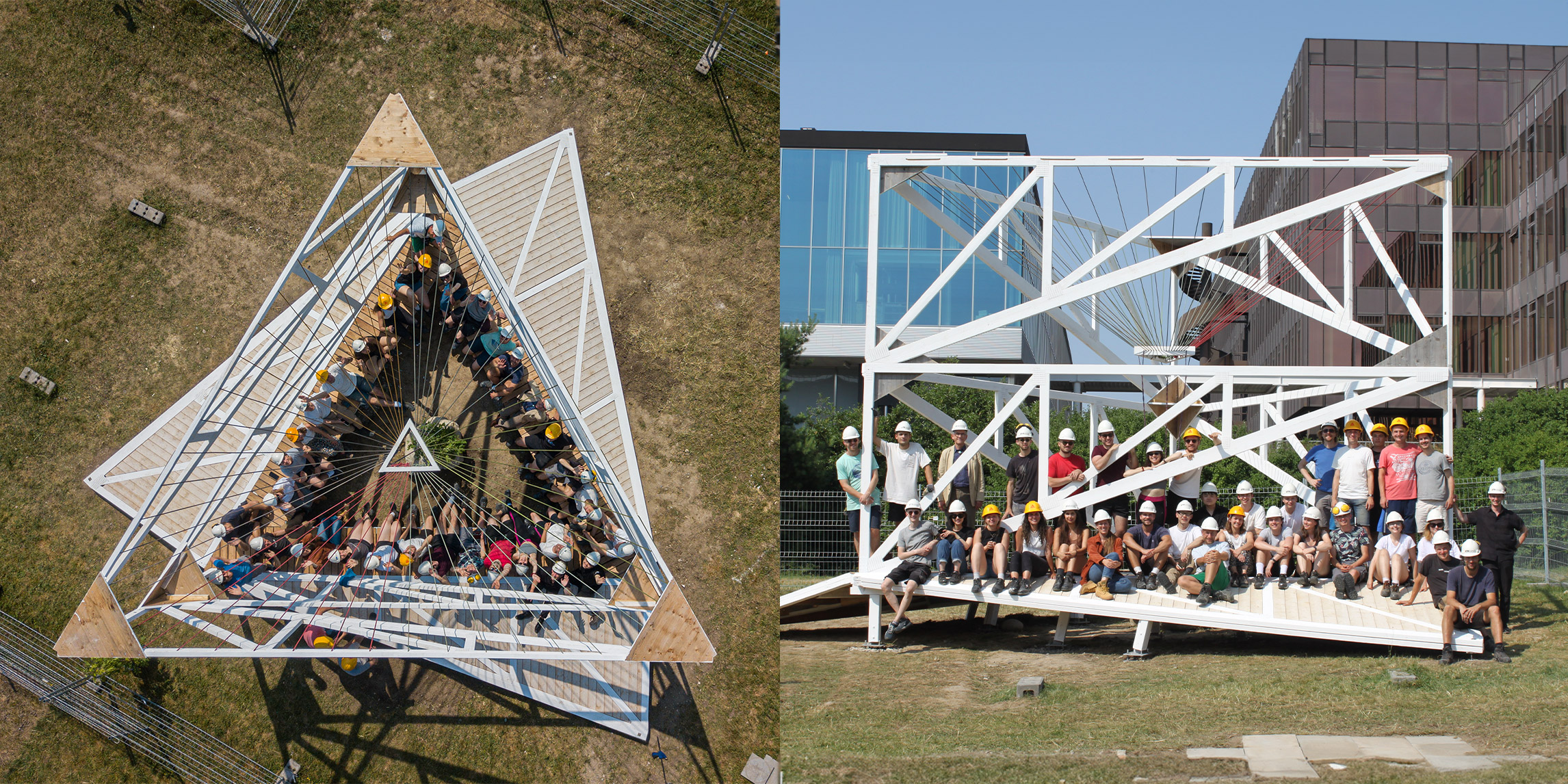An excellent pavilion for circular construction
In a practical teaching project, ETH students used materials from the demolished Huber Pavilions to construct a building in the spirit of the circular economy. The Re-Use Pavilion on the ETH Hönggerberg campus has now been honoured with an Arc Award. The project was led by Professors Catherine De Wolf (D-BAUG) and Momoyo Kaijima (D-ARCH).

In summer 2022, three temporary wooden buildings - the Huber Pavilions - had to make way for a new building on the ETH Hönggerberg campus. The CircÛbi teaching project took advantage of this opportunity: under the co-leadership of two ETH professors, civil engineer Catherine De Wolf and architect Momoyo Kaijima, students collected the construction elements (or components) of the dismantled teaching buildings in order to reuse the materials according to the principle of the circular economy.
For an entire semester, around 30 students from the fields of civil engineering, architecture, mechanical engineering, computer science and materials science worked together on issues relating to the reuse of building materials. In order to master the logistical Herculean task, they inventoried the components with lasered QR codes and thus created a digitalised interface - which enabled them to create a new building from reused wooden components: the Re-Use Pavilion on the ETH Hönggerberg campus. The work of art of the circular economy has now been honoured with the Swiss Architecture Prize Arc Award in the "Next Generation" category.

“As engineers, we therefore collaborate with various stakeholders to facilitate and realize the potential of reuse and regeneration.”Catherine De Wolf
The jury paid particular tribute to the fact that this study project was developed in collaboration with various disciplines and also recognised that it is a prime example of circular economy methods and the reuse of building materials.
"Circular construction requires collaborative creation: bridging various disciplines and harnessing digital technologies is urgently needed to scale circular economy principles in the construction sector. As engineers, we therefore collaborate with various stakeholders to facilitate and realize the potential of reuse and regeneration," says Catherine De Wolf, Professor of Circular Engineering for Architecture at the Department of Civil, Environmental and Geomatic Engineering (D-BAUG).
The project was made possible thanks to the cooperation with external partners, including Barbara Buser, Pascal Angehrn from "Baubüro in situ", Mathis Jedele and Christoph Angehrn from B3 Kolb, and Michael Wick from "Wiederverwekle".